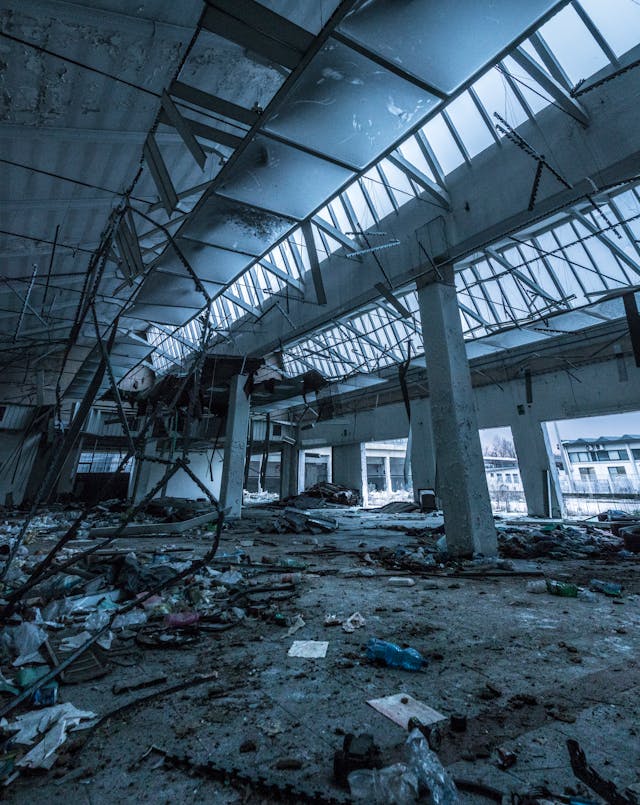Picture this: a street cut through by shards of glass, a debris-filled floor. The once-majestic building declines and dissolves to create a place for weeds. Side by side, even though demolition has the semblance of something easy to destroy, a dent-free project accomplishes more than just the fall of a building. It necessitates detailed planning, considering security, minimizing the impact on the environment, and maintaining performance.
This article discusses the key things that need to be considered while performing a Lexington demolition to make sure that the destruction is done properly, responsibly, and safely.
Table of Contents
Planning the Foundation: Building Blocks for Success
Before the first swing of the wrecking ball, a solid foundation of planning must be laid. This groundwork begins with clearly defining the project scope. What structures or areas are targeted for demolition? What is the desired outcome of the project – a clear space for new development or potential material salvage?
The site evaluation subsequently follows. The land gets carefully examined by the experts who look for the hidden dangers of, for instance, utility lines, asbestos, or lead paint. Not only do these appraisals provide workers’ safety, but they also help to comply with environmental rules and prevent delays, which are always expensive.
On completion of thorough research of the project’s scope and the likely obstacles, a detailed demolition plan is drawn. This plan details the preferred methods, tools, and the order of events needed in the process of taking down the structure. All necessary permits and approvals from the relevant local authorities should be obtained in advance so that the process goes smoothly without the need for legal hurdles.
Safety First: Protecting Workers and the Public
The security of all the personnel and facilities at the demolition site is of primary importance. A comprehensive security plan is the key to this remit. It identifies hazards and outlines risk mitigation techniques and PPE all workers must use.
Worker training is the second main element of safety. The training of all personnel involved in the demolition will deal with safe working practices. These cover the utilization of equipment, warnings against hazards, emergency response procedures, and an evacuation protocol.
Public safety during the demolition period must also be a priority. This implies the construction of strong fencing around the site to regulate illegal access, minimizing dust and garbage creation to reduce air pollution, and putting up visible signage to inform the public of the ongoing operation.
Choosing the Right Method: Deconstruction or Demolition?
The chosen demolition technique largely depends on the specific project requirements and the structure itself. Here are a few common methods:
- Mechanical demolition: The utilization of excavators, bulldozers, and hydraulic breakers is efficient for large-scale projects but can introduce a huge amount of dust and debris into the environment.
- Explosive demolition: Employing this highly skilled method for the construction of complex and heavily fortified structures necessitates strict planning and execution by specialists, who are also usually called upon in situations like custom projects.
- Implosion demolition: Exemplifying the demolition of a structure by strategically placing explosives to blow the building inwardly, this tactic limits the demolition footprint but necessitates well-mastered techniques and safety procedures.
- Deconstruction: This sustainable technique implies taking the structure apart and saving materials for future reuse or recycling. Deconstruct is becoming popular because it is environmentally friendly, but it is time-consuming and requires specialized skills.
Environmental Considerations: Minimizing the Impact
Demolition projects that will help in progress development may have a negative impact on the environment if conducted with carelessness. Dust control methods include, for example, the use of water sprayers and dust suppression systems, all to prevent air pollution and keep public health.
Waste management is of great importance. Separation of recyclable materials, like metal and wood, would be ensured for their responsible utilization and safe disposal of dangerous waste, which includes asbestos and lead paint. Complying with established environmental regulations and getting professional deliverance is essential to reducing the environmental harm from a demolition project.
Communication and Project Management: Keeping it on Track
Proper and frequent communication between all participants, including the demolition crew, site supervisor, and regulatory authorities, is essential for a successful job. Prompt announcements, constant communication platforms, and periodical progress meetings ensure that everyone is on the same track.
Successful project management is the second key factor. The deadline and budget compliance maintain the schedule and prevent costly delays. Implementation of project management tools and the development of a collaborative culture are the key elements of effective project implementation.
Conclusion: Building a Successful Future Through Responsible Demolition
Necessary demolition, if done properly and with the right carefully, can help to achieve the development of the existing infrastructure and to open space for something new. Through careful attention to safety, reduction of environmental footprint, and selection of an alternative way, there is room for such a project to be performed not only efficiently but responsibly as well. This will pave the way for the future.
It goes without saying, therefore, that your safety is as important as any other, and hence, seeking professional help during the demolition stage is imperative. Engaging demolition contractors and specialists who have experience in the field helps you obey all regulations, focuses attention on safety measures, and raises the success rate of the process. Therefore, whenever you are aiming to tear down construction, all the stages, from project planning to responsible demolition implementation, are components of success.
Featured Photo by Francesco Paggiaro: https://www.pexels.com




